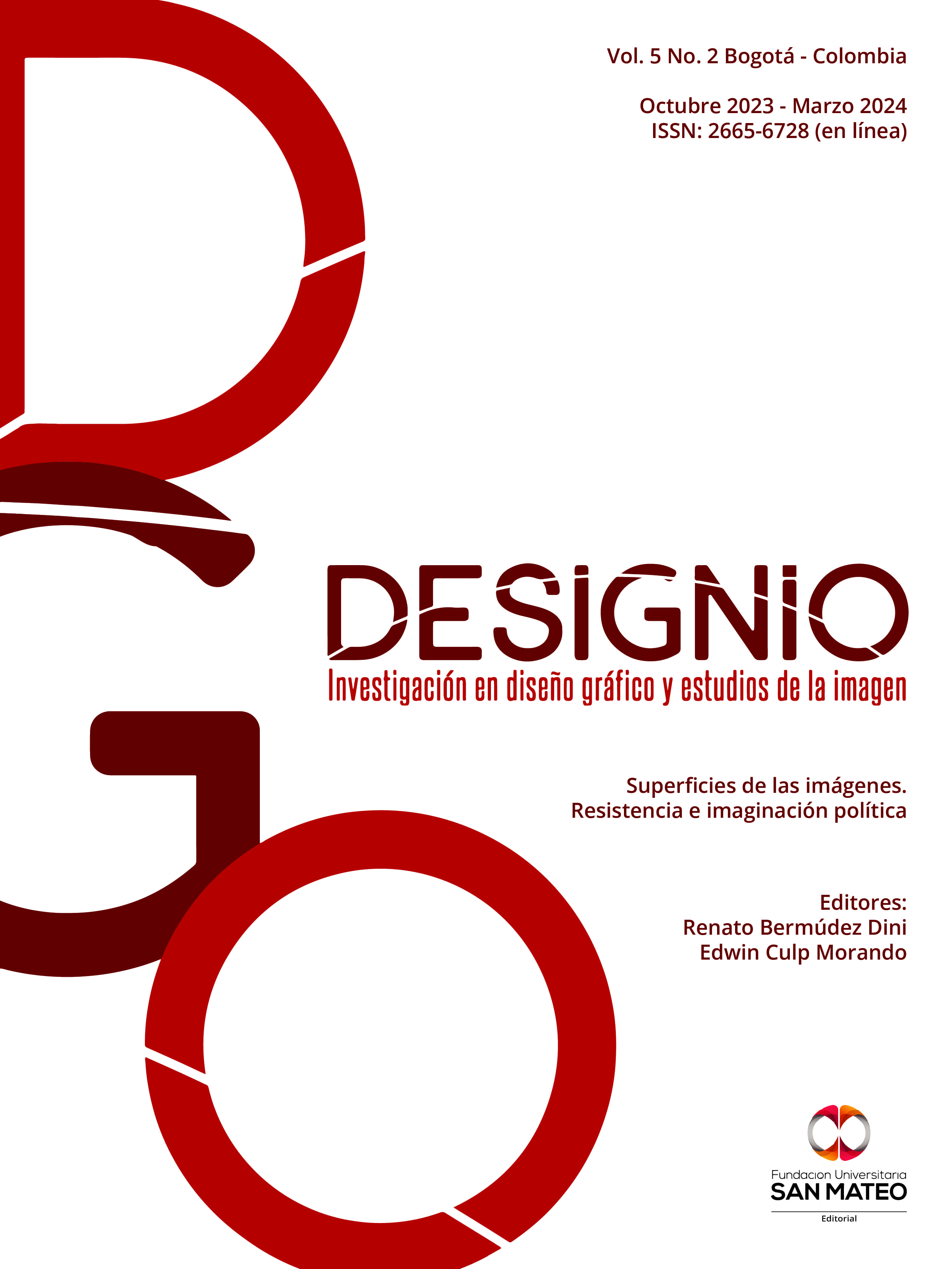Art and political imagination insights from the Zapatista movement in Mexico
Main Article Content
Abstract
This contribution focuses on the communication strategies developed by the Zapatista autonomous communities (Chiapas, Mexico). The paper begins with a historical approach to the relationship between aesthetics and Zapatism, developed in regard to the most recent artistic events of the Zapatista history, highlighting its symbolic and political force. The aim is to cross the perspective of the anthropology of art and the semiotics of culture from a corpus constituted by the visual artifacts produced in the framework of the different editions of CompArte (an art festival initiated in 2016 by the autonomous communities), as well as the numerous posters produced to communicate the international meetings, or the murals made on the walls of the Caracoles (centers of autonomous organization in the Zapatista territory). Two ethnographic scenes constitute the core of the article: a drawing workshop organized within the 2018 CompArte festival, and a mural painting made by American students in residence in a Caracol the same year. The aim is to show how political imagination embodied on surfaces, through dynamics of appropriation and reappropriation that operate in this visual production. These images of resistance bring together visual elements from various iconographic traditions and a plurality of actors belonging to different activist networks (in Mexico, California, and Europe). This variety of actors participate in collective creation dynamics that reaffirm the Zapatista project of “A world where many worlds fit”.
Downloads
Article Details

This work is licensed under a Creative Commons Attribution-NonCommercial-NoDerivatives 4.0 International License.
References
Apostoli, E. (2017). Autochtonies contraires. Circulations d’idées et de pratiques de résistances indigènes transatlantiques. Autrepart, 4(84), 177-195. https://doi.org/10.3917/autr.084.0177
Baschet, J. (2005). La rébellion zapatiste: Insurrection indienne et résistance planétaire. Flammarion.
Baschet, J. (2018). Défaire la tyrannie du temps présent. Temporalités émergentes et futurs inédits. Editions La Découverte.
Baschet, J. (2021, abril 26). L’invasion zapatiste commence! Lundimatin. https://lundi.am/L-invasion-zapatiste-commence
Baschet, J. y Goutte, G. (2014). Enseignements d'une rébellion. La petite École zapatiste suivi d’Un pont pour communiquer du compañero Maestro Galeano. Éditions de l'Escargot.
Benjamin, T. (2000). A Time of Reconquest: History, the Maya Revival, and the Zapatista Rebellion in Chiapas. The American Historical Review, 105(2), 417-450.
Bonfil Batalla, G. (2017). Mexique profond, une civilistaion niée. Zones Sensibles.
Cacelín, J. (2018, noviembre 30). ¿En qué consiste la “cuarta transformación” que López Obrador quiere para México? Univision. https://www.univision.com/noticias/america-latina/en-que-consiste-la-cuarta-transformacion-que-lopez-obrador-quiere-para-mexico
Castoriadis, C. (1975). La institución imaginaria de la sociedad. Tusquets Editores.
Cozzolino, F. (2017). Peindre pour agir. Muralisme et politique en Sardaigne. Karthala.
Cozzolino, F. y Solomoukha, K. (2021). De l’ethnographie à la narration visuelle interactive: une enquête par l’image sur l’iconographie zapatiste. Ethonographiques.org, (42). https://www.ethnographiques.org/2021/Cozzolino_Solomoukha
De Parres, F. (2022). Poéticas de la resistencia: arte zapatista, estética y decolonialidad. Cátedra Jorge Alonso, Universidad de Guadalajara.
De Parres, F. (2021a). El arte comunitario maya-zapatista como práctica compleja transdimensional desde la aesthesis decolonial. En N. Amoroso et al. (Coords.), Lo estético en el arte, el diseño y la vida cotidiana (pp. 277-298). Universidad Autónoma Metropolitana.
De Parres, F. (2021b). El arte como camino hacia el internacionalismo emancipatorio. En Los huecos del agua. Arte actual de pueblos originarios (pp. 55-64). Museo Amparo, UNAM, The Americas Research Network.
De Parres, F. y Zagato, A. (2019). Arte, estética y política en el movimiento zapatista contemporáneo. En A. López et al. (Comp.), Dominio público. Imaginación social en México desde 1968 (pp. 63-80). Museo Amparo.
Debroise, O. (2006). La era de la discrepancia, arte y cultura visual en México 1968-1997. Universidad Nacional Autónoma de México.
Duarte, C. (1998). Camaristas: fotógrafos mayas de Chiapas. Centro de la Imagen CIESAS.
Escobar, T. (2011). Culturas nativas, culturas universales. Arte indígena: el desafío de lo universal. En J. Jiménez (Ed.), Una teoría del arte desde América Latina (pp. 31-52). Museo Extremeño e Iberoamericano de Arte Contemporáneo.
Figuerola, P. (2011). Les dieux, la parole et les hommes: Rituels dans une communauté maya du Chiapas. Editions de l’École des Hautes Études en Sciences Sociales.
Fraenkel, B. (1992). La signature. Genèse d’un signe. Gallimard.
Genovese, T. (2016). Lento, Pero Avanzo: Indigenous Mayan Influence in Zapatista Speech & Imagery (Working paper). Northern Arizona University.
Guiteras, H. (1996). Los peligros del Alma: visión del mundo de un tzotzil. Fondo de Cultura Económica.
Harvey, D. (2003). Accumulation by Disposession. En The New Imperialism. Oxford University Press.
Hobsbawm, E. (1994). Age of Extremes: The Short Twentieth Century 1914-1991. Abacus.
Kristeva, J. (1997). Bajtín, la palabra, el diálogo y la novela. En D. Navarro (Coord.), Intertextualité Francia en el origen de un término y el desarrollo de un concepto. UNEAC.
Le Bot, Y. y Subcomandante Marcos. (1997). Le Rêve zapatiste. Seuil.
Léger, M. & Tomas, D. (2017). Zapantera Negra. An Artistic Encouter Between Black Panthers and Zapatistas. Common Notions.
Leyva, X. (1998). The New Zapatista Movement: Political Levels, Actors and Politic Discourse in Contemporary Mexico. En V. Napolitano y X. Leyva (Eds.), Encuentros Antropológicos: Power, Identity and Mobility in Mexican Society (pp. 5-35). Institute of Latin American Studies.
López, X. (2015). Yo´taniel bajtik, re-ch´ulel-izarnos y revivir lo sagrado desde nuestra propia humanidad como matriz del fin de la Jow-hidra capitalista. En El pensamiento crítico frente a la Hidra capitalista III (pp. 262-276). EZLN.
Lotman, I. (2000). La semiosfera. Semiótica de las artes y de la cultura (Vol. 3). Universitat de València.
Marin, L. (1993). Des pouvoirs de l’image: gloses. Seuil.
Martínez, N. (2018). El CompArte zapatista por la humanidad. Un arte que ni se ve ni se escucha. Re-visiones, (8). https://dialnet.unirioja.es/servlet/articulo?codigo=6856347
Muñoz, G. (2003). EZLN: 20 y 10, el fuego y la palabra. La Jornada Ediciones.
Pleyers, G. y Garza, M. (2017). México en movimientos. Resistencias y alternativas. Universidad Autónoma de Ciudad de Juárez.
Subcomandante Marcos. (2012). Relatos del viejo Antonio. Centro de Información y Análisis de Chiapas.
Subcomandante Moisés. (2016, julio 29). El arte que no se ve, ni se escucha. Enlace Zapatista.
http://enlacezapatista.ezln.org.mx/2016/08/03/el-arte-que-no-se-ve-ni-se-escucha/
Urban, T. (2007, agosto 21). Caracol de la resistencia: Zapatista Symbol References Maya Past. Studio Michael Shanks – Stanford. https://web.stanford.edu/dept/archaeology/cgi-bin/archaeolog/?p=141
Viaje Zapatista. (s.f.). Un viaje por la vida. https://viajezapatista.eu/fr/

